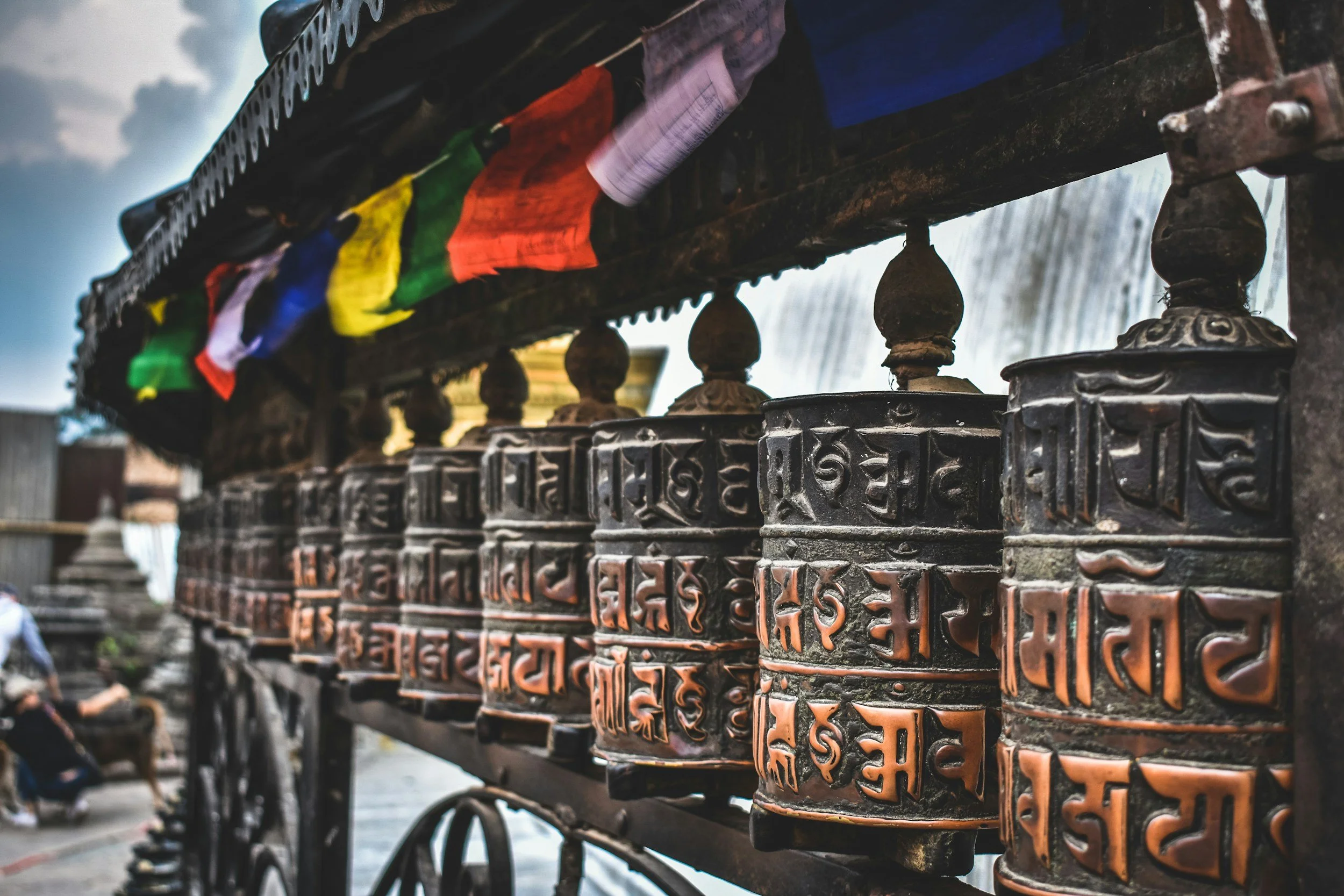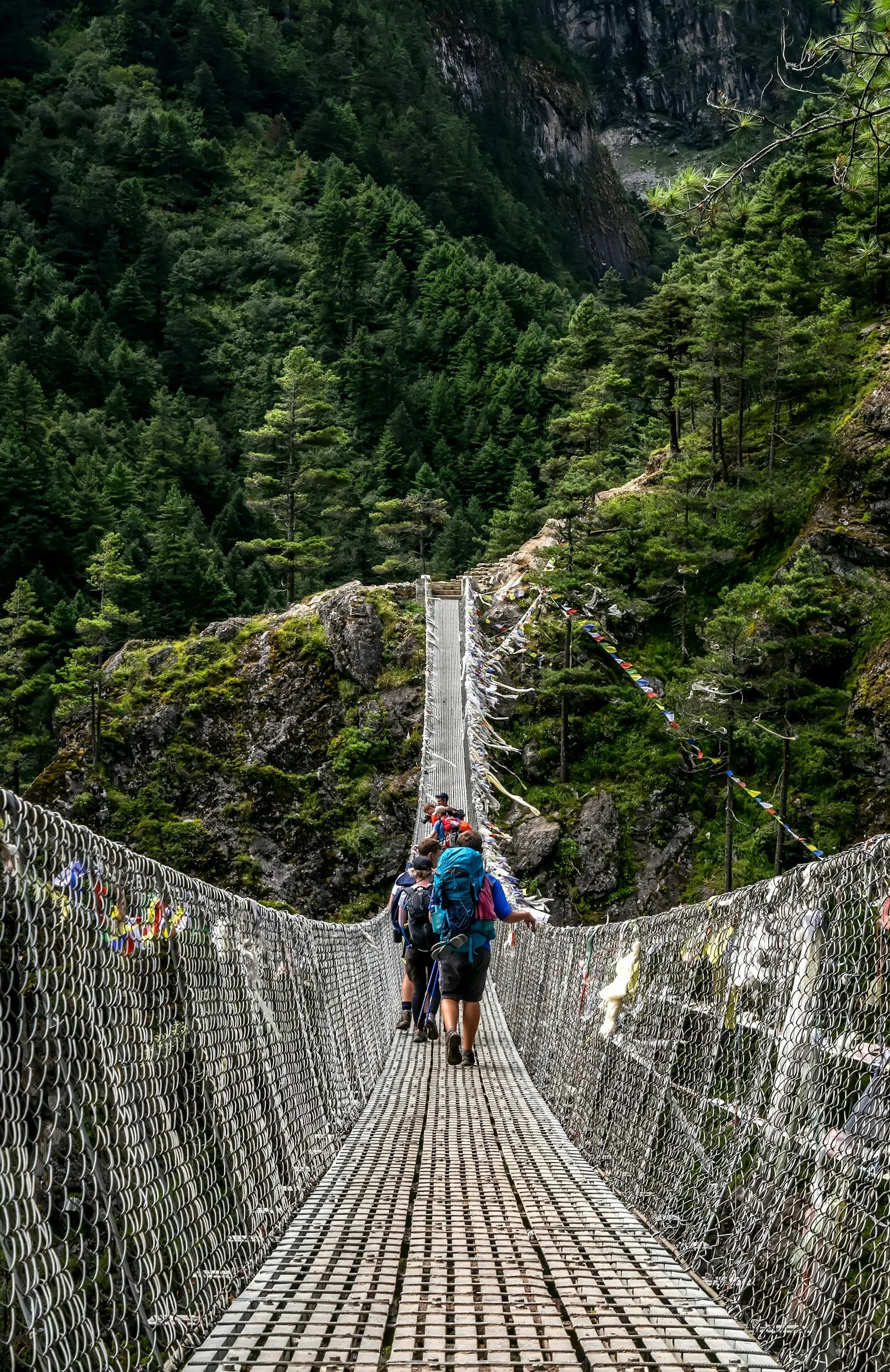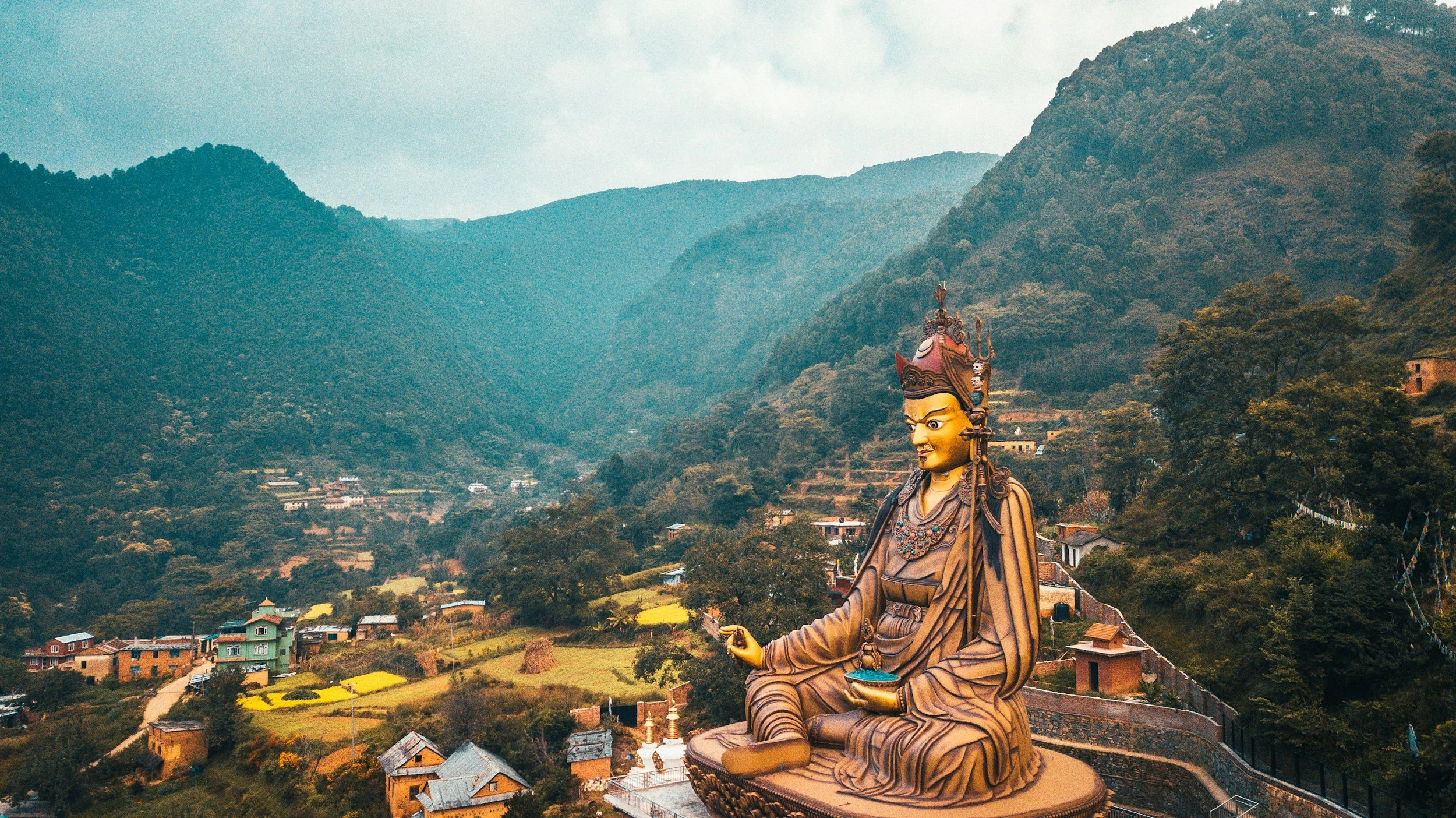
Nepal Travel Guide
Nepal: Sacred, Chaotic, and Closer to the Sky
Nepal doesn’t rush you. It invites you. Through prayer flags, yak bells, and smoky temples. Through narrow alleys and wide-open summits. It’s the kind of place where monks chant while dogs nap and snow-capped peaks judge your selfie angle in silence.
Nepal is not just a destination — it’s a shift in altitude and attitude.
Quick Facts
Capital: Kathmandu
Population: Approx. 30 million
Language: Nepali (English widely spoken in tourist areas)
Currency: Nepalese Rupee (NPR)
Time Zone: NPT (UTC +5:45)
Climate: Varied — from subtropical valleys to alpine heights
Visa Requirements: Tourist visa on arrival for most nationalities
Top Religions: Hinduism (majority), Buddhism
Safety: Generally safe, but watch altitude and chaotic traffic
Transport: Buses, microbuses, taxis, domestic flights (weather gods permitting)
Vibe: Spiritual, rugged, humble
Best for: Trekkers, seekers, mountain lovers, slow wanderers
Top 5 Attractions
1. Boudhanath Stupa (Kathmandu)
One of the largest spherical stupas in the world and a center of Tibetan Buddhism in Nepal. Its massive mandala and serene ambiance make it a must-visit.
2. Pashupatinath Temple (Kathmandu)
A sacred Hindu temple complex on the banks of the Bagmati River, Pashupatinath is dedicated to Lord Shiva and is known for its spiritual energy and intricate architecture.
3. Swayambhunath (Monkey Temple) (Kathmandu)
Perched atop a hill, this ancient stupa offers sweeping views of the city. Revered by both Buddhists and Hindus, it's famous for its peaceful vibe and playful monkeys.
4. Patan Durbar Square (Lalitpur)
A stunning display of Newar architecture, this historic square is filled with temples, palaces, and centuries of cultural craftsmanship.
5. Chitwan National Park (Chitwan)
Nepal’s first national park and a UNESCO site, known for its jungle safaris, canoe rides, and sightings of rhinos, elephants, and the elusive Bengal tiger.
Activities
Trekking: from Everest Base Camp to the Annapurna Circuit
Visiting ancient stupas and Hindu temples
White-water rafting, canyoning, and paragliding
Yoga and meditation retreats in the hills
Learning to say "Namaste" and meaning it
Sitting still and watching clouds slide over the Himalayas
Culture & Etiquette
Always walk clockwise around temples and stupas
Dress modestly, especially at religious sites
Remove shoes before entering homes and sacred spaces
Use your right hand for giving and eating
Don’t touch people’s heads — especially kids
Public displays of affection are uncommon
What Not to Do
Don’t point your feet at people or religious images
Don’t enter temples without permission or proper dress
Don’t photograph locals, especially monks, without asking
Don’t litter — pack it out, especially in the mountains
Don’t underestimate altitude — go slow, hydrate, and listen to your body
Tipping in Nepal
Tipping is common in the tourism sector and genuinely appreciated — especially by guides and porters who often rely on it as part of their income.
Restaurants:
5–10% in tourist-focused places. Round up in smaller cafés.
Hotels:
Rs. 100–200 for porters, and a similar amount for housekeeping at checkout.
Guides / Porters / Trekking staff:
Guides: Rs. 800–1,000 per day
Porters: Rs. 400–600 per day
Trek cooks or assistants (if any): Rs. 300–500 per day
Taxis:
Tipping not expected — but rounding up is kind.
Massage / spa:
10% if not already included.
Cash is always preferred, and a simple “Dhanyabad” (thank you) makes it even better.
Cannabis in Nepal (as of 2025)
Cannabis grows wild in parts of Nepal and is sometimes offered to tourists — but it is still illegal.
Though tolerated in certain areas (especially around Shivaratri, a Hindu festival). Cannabis may be seen grown outside of homes in mountain villages where it is used as traditional medicine. Possession or use can still result in fines, detention, or worse.
Bottom line: just because it’s around doesn’t mean you should mess with it.
Please note: Always check the current laws and regulations at the time of your travel to Thailand, as they may change after this information was published. I am not responsible for any legal issues arising from changes in the law.
Destinations by Region
Kathmandu Valley
Kathmandu – Chaos, charm, and sacred noise
Patan (Lalitpur) – Art, craft, and quiet corners
Bhaktapur – Living medieval museum of bricks and temples
Central Nepal
Pokhara – Mountains, lake views, and clean air
Bandipur – Restored hilltop town with views and no traffic
Gorkha – Historical heartland with warrior pride
The Himalayas
Everest Region (Solukhumbu) – Treks, Sherpas, altitude
Annapurna Region – Trekking variety for every skill level
Langtang – Quieter trails, Tamang culture, post-earthquake resilience
Southern Nepal (Terai)
Chitwan – Jungle safaris and Tharu culture
Lumbini – Sacred ground and peaceful reflection
Janakpur – Hindu temples and vibrant festivals
Final Note
Nepal doesn’t shout. It chants.
It teaches you how to walk slowly, breathe deeply, and look people in the eyes.
It’s a country where the altitude might knock you out — but the people will lift you up.
And somewhere between the prayer flags and the peaks, you may just find something you weren’t looking for.
















